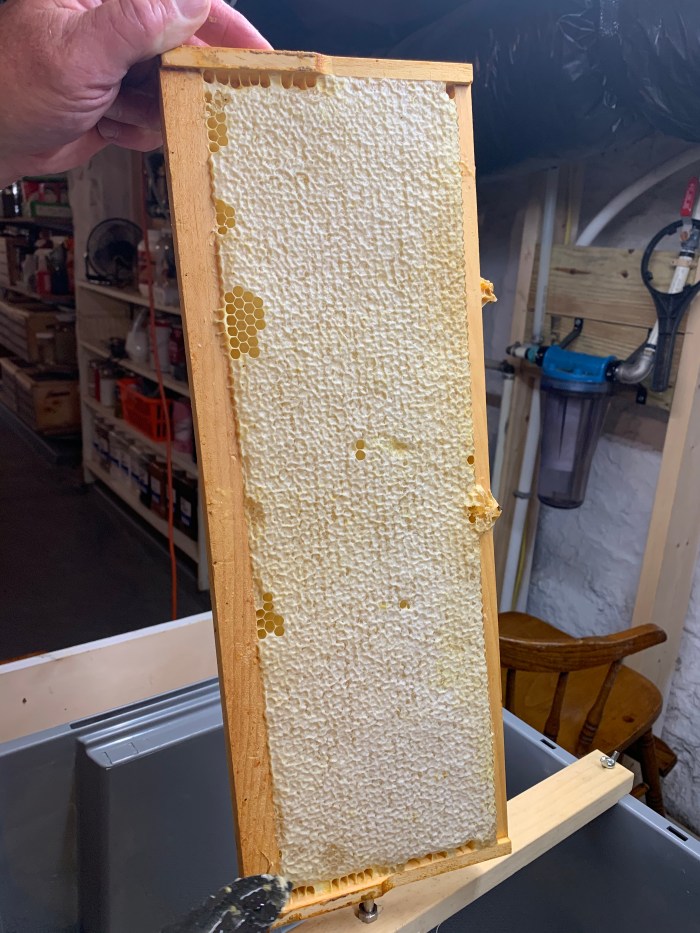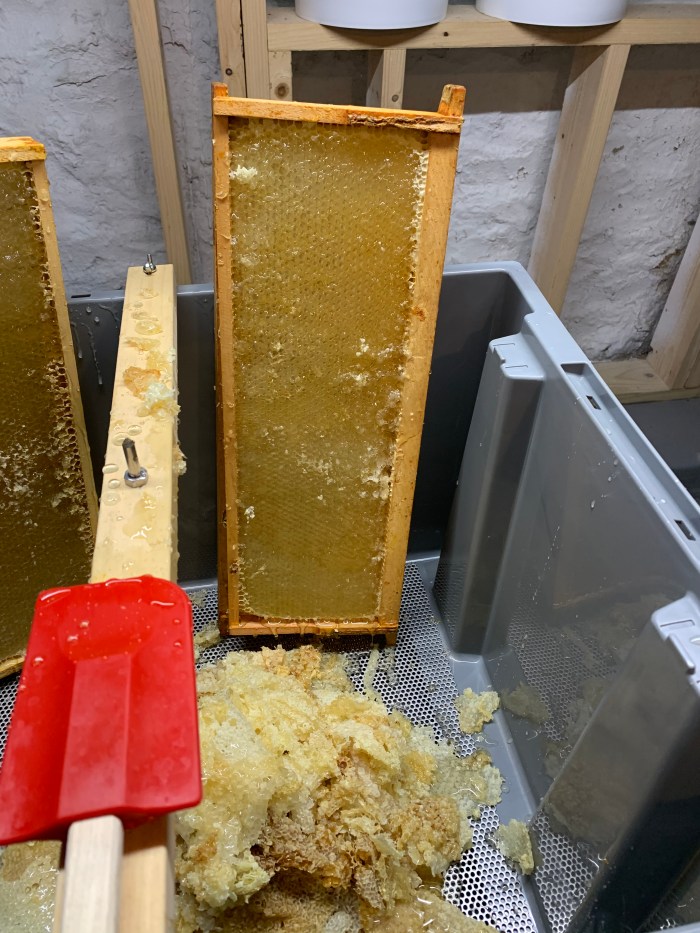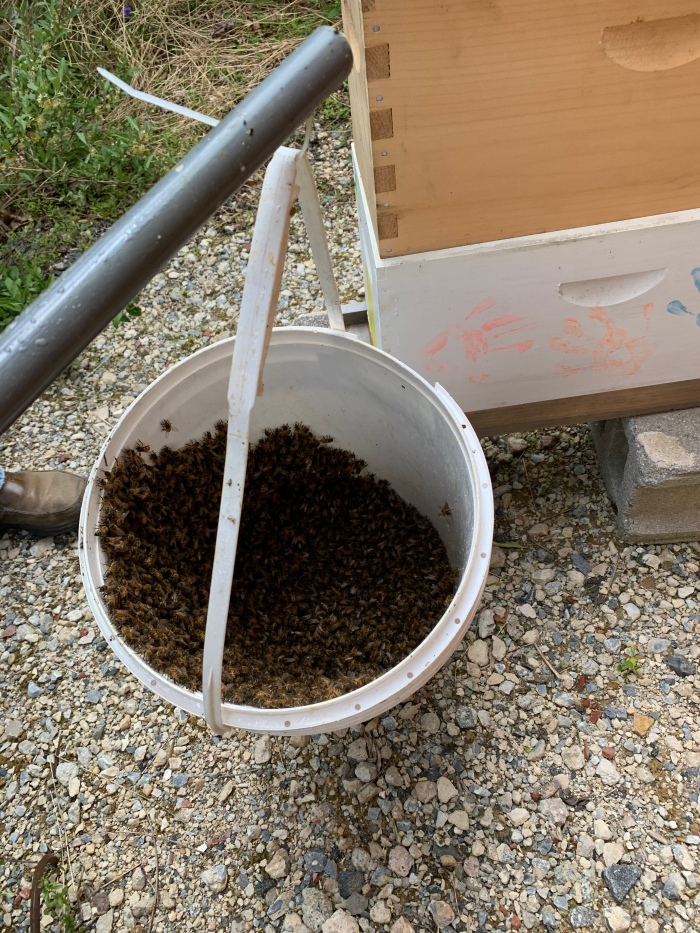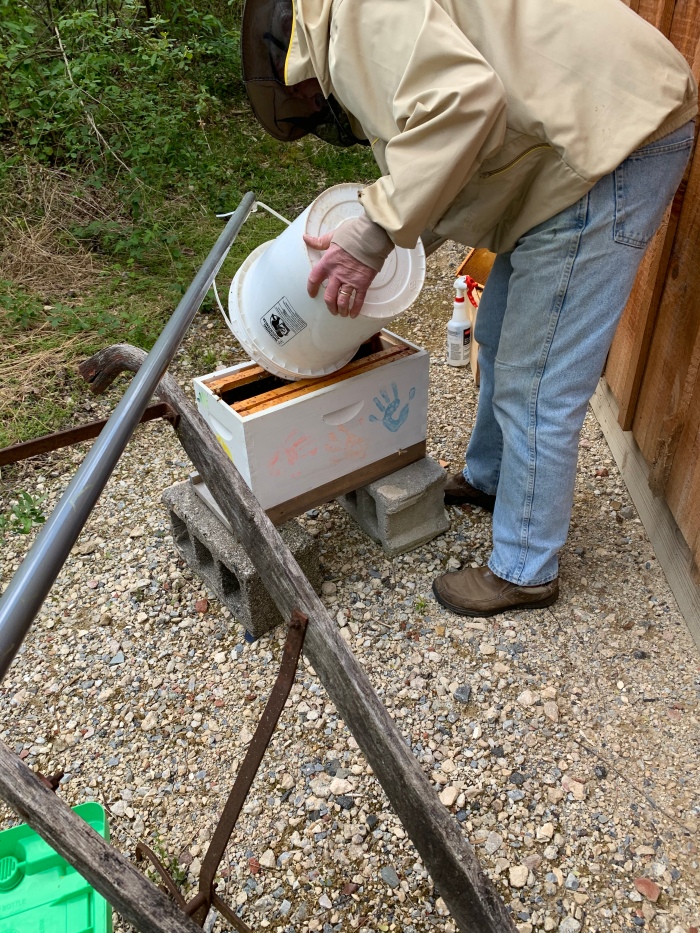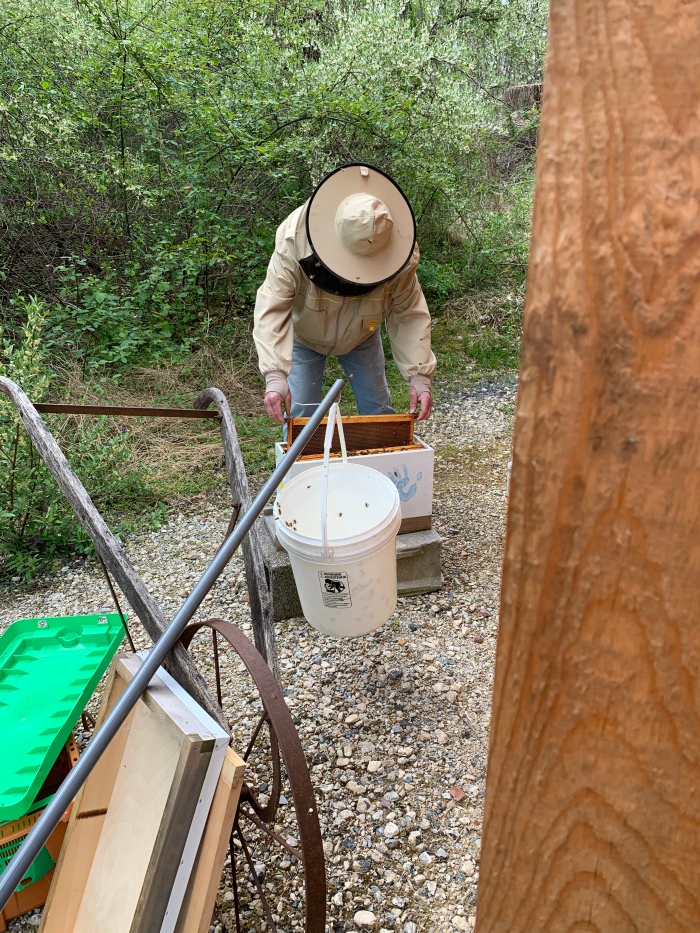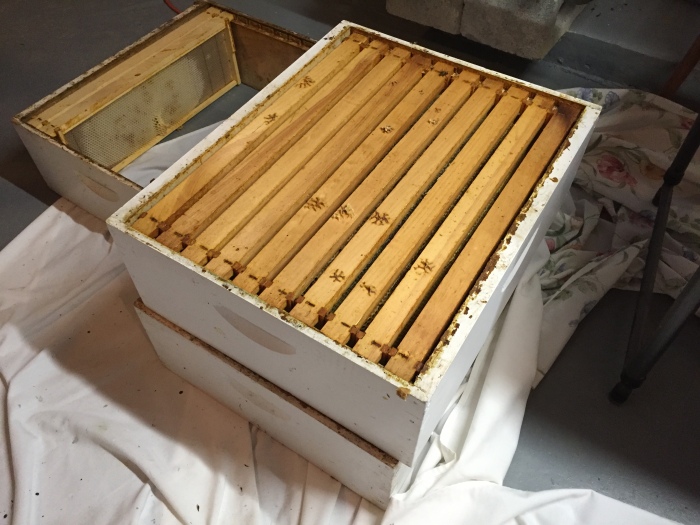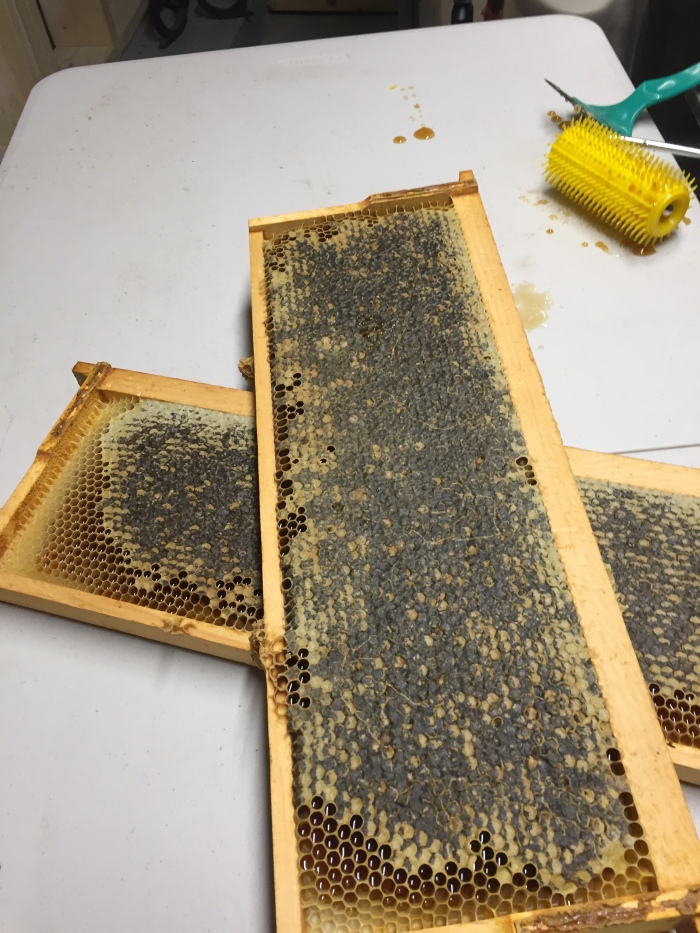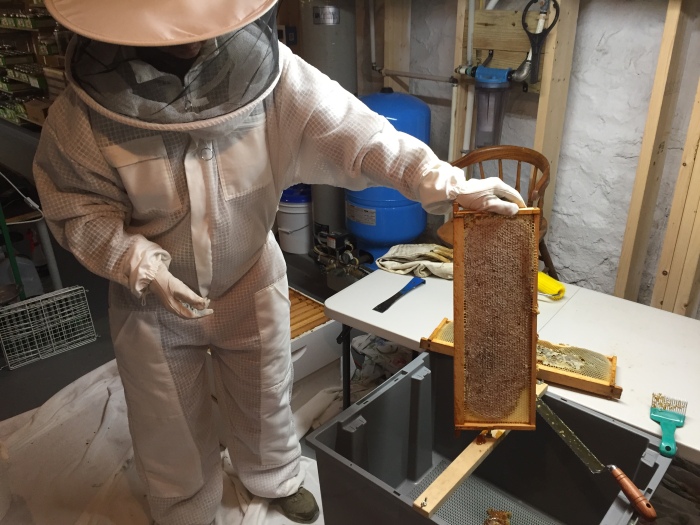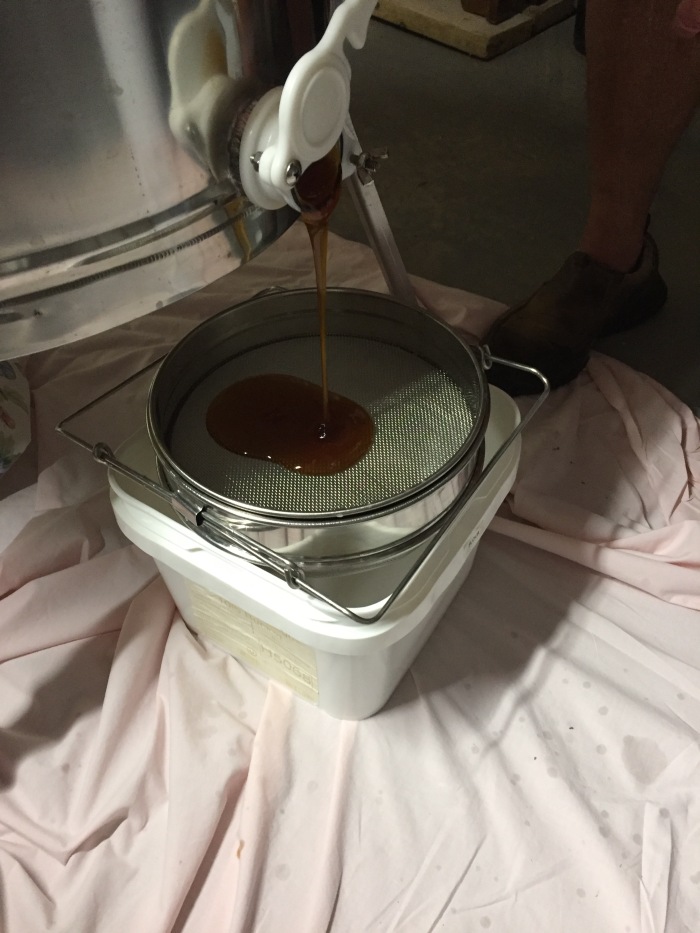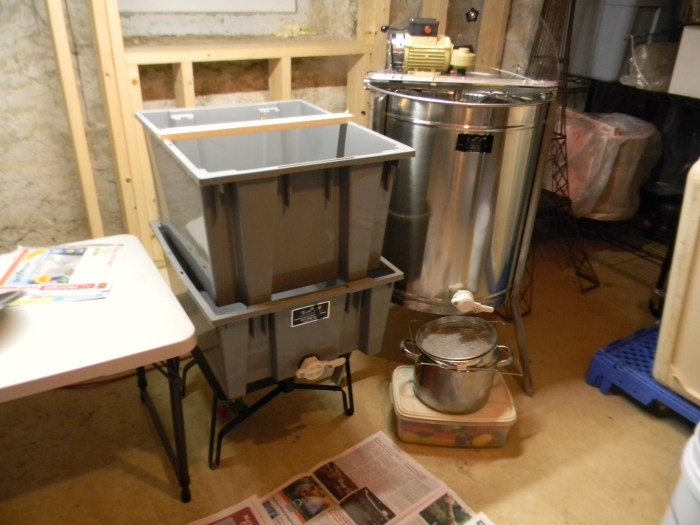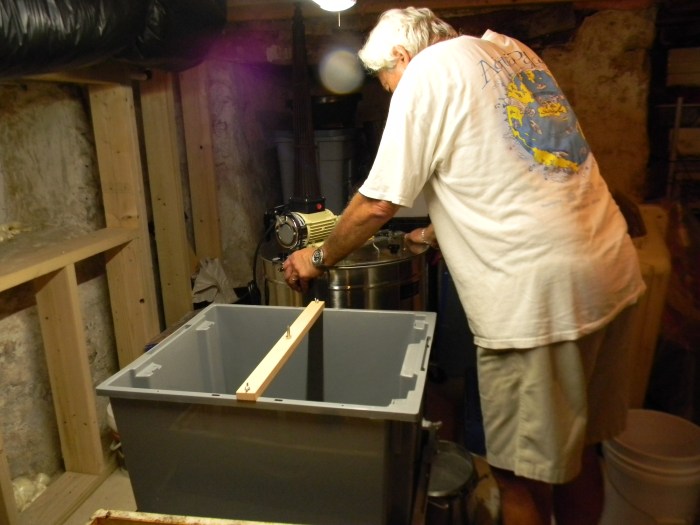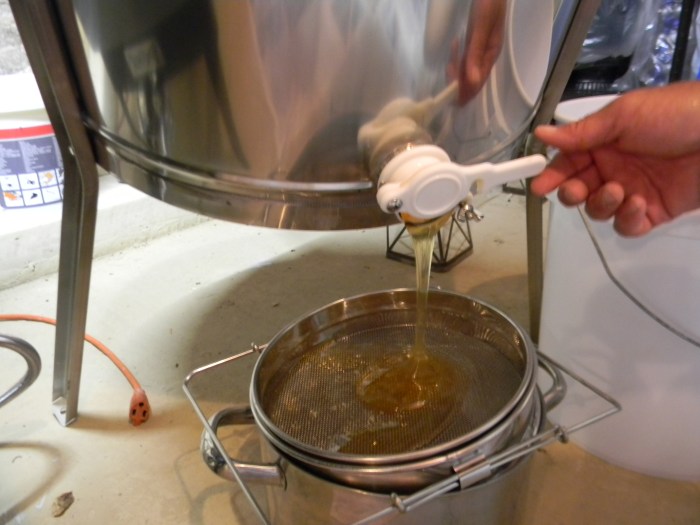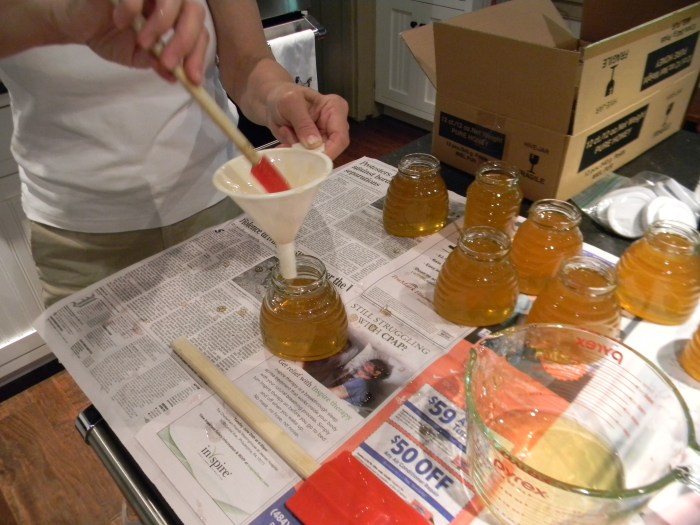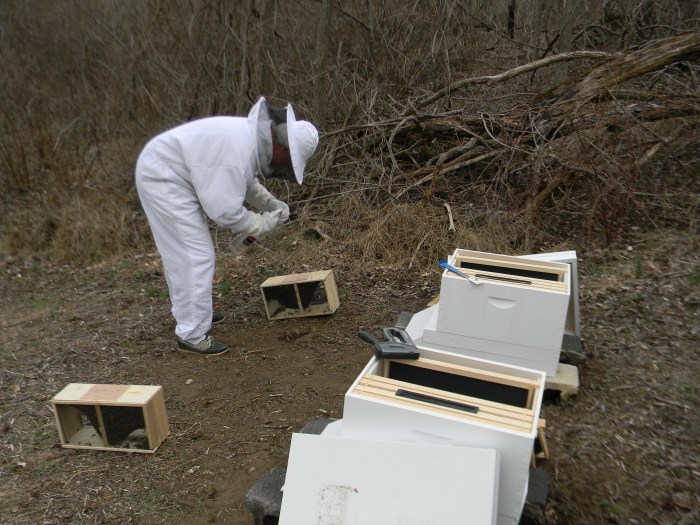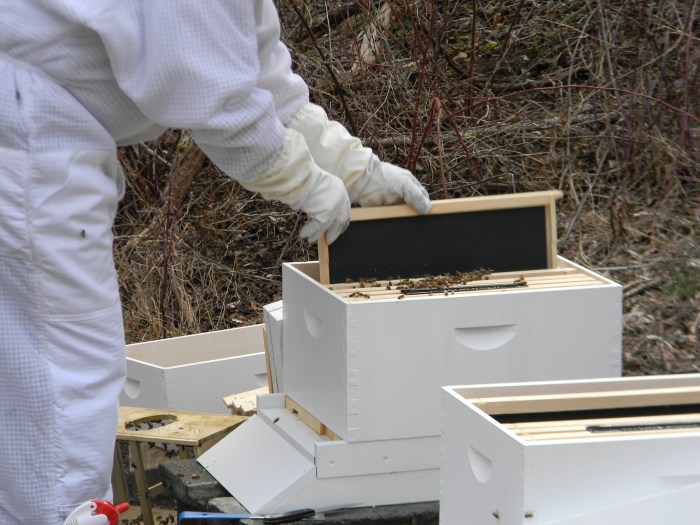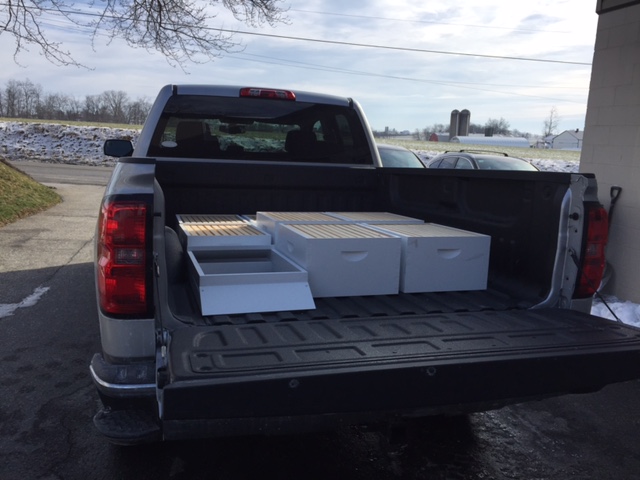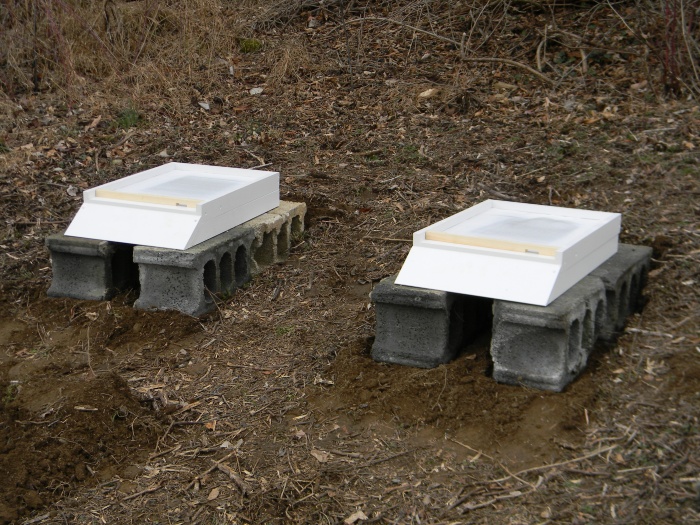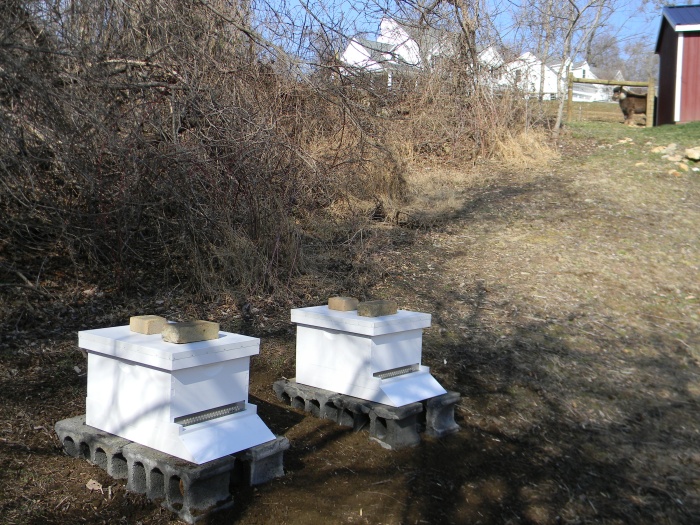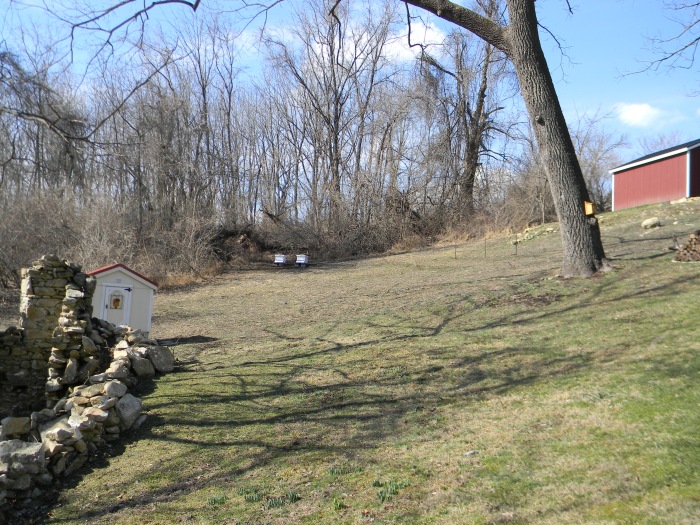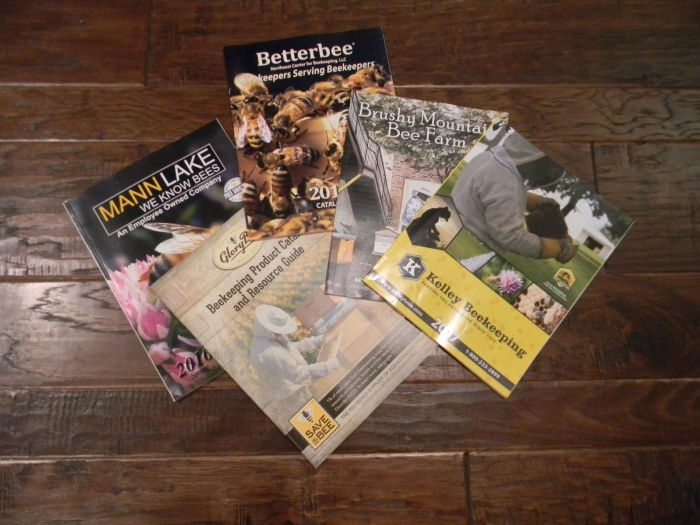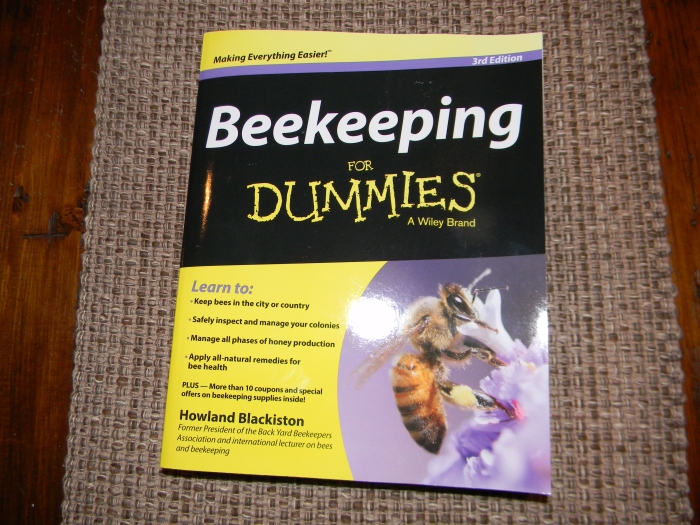Two weeks ago the hives were getting full of honey. We had 15 frames that were ready to extract, so Saturday morning we set up all the equipment and got to work. By the end of the day, we had 45 pounds of honey. That’s a lot of honey. But wait, there’s more…
This Saturday we did it again. We got another 60 pounds of honey. That’s 105 pounds so far this year. But wait, there’s even more…
The Linden trees are blooming and they are covered with honey bees. We’ll probably be extracting more honey in another week or two. So far, the honey we have extracted is VERY light – a white clover honey from all the clover flowers growing in the yard. It will be interesting to see if the Linden honey is as light, and how the flavor differs. But you know what they say… don’t count your honey until you have it in your jars (or something like that), so I don’t want to predict what the outcome might be.
Linden tree blossoms also make a very nice tea, so just in case we don’t get Linden honey, I picked some of the blossoms from a low hanging branch (along with the bract leaves attached to the blossom), dried them in the dehydrator and ground them up into tea. Some chilly night this fall, I’ll have a cup of Linden blossom tea – hopefully with a spoonful of Linden honey to go with it.
